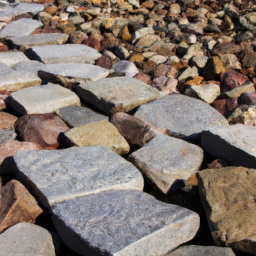Stone Edging For Landscaping
Stone Edging For Landscaping
Stone Edging For Landscaping: An Exhaustive Exploration
Types and Forms of Stone Edging
Stone edging is an excellent addition to landscaping projects large and small. Although people often think of stone edging as vast stone walls lining meticulously planned gardens, there are a variety of different types and forms of stone edging that can be used to add a unique and inviting appeal to any landscape.
The most common type of stone edging is brick, which can be used to create a variety of simulated walls. Stones created during the manufacturing process are often cut into various shapes and sizes, including squares, rectangles, and circles. Brick stones can be mortared into place with masonry cement, as well as individually placed in dry-laid walls. Natural stone retaining walls incorporate natural stones that can be found in a wide variety of sizes, shapes, and colors. Stacked stones, when interspersed with soil to help hold the walls together, create a timeless appearance that blends perfectly with surrounding vegetation.
When selecting stone edging, it's important to consider both the aesthetic qualities as well as the strength of the stone. When used as a retaining wall, the stones should be able to resist erosion and degradation by water and temperature changes. Granite and limestone are two materials that are often used for stone edging; however, sandstone, flagstone, and river rocks are also suitable materials.
Historical Context and Milestones for Stone Edging
The use of stone edging in landscaping dates back thousands of years. The ancient Greeks were one of the first to use stone edging for their gardens, which were believed to have been decorated with sculptures and elaborate fountains. In England, stone edging was popular during the Victorian era, and the style was adopted by the American colonists during the mid-1800s. In recent years, stone edging has become increasingly popular due to its durability, versatility, and low maintenance requirements.
Popular Trends in Stone Edging
Most stone edging projects are found in residential landscapes; however, stone edging can also be found in commercial landscaping projects, including sidewalks, driveways, and pathways. In addition to being a popular choice for edging, many contractors are using stone edging to create privacy walls, fire pits, and outdoor kitchen areas.
From an aesthetic standpoint, stone edging is a versatile choice that can be used to create a wide range of looks. For example, a stone edging project can range from a subtle and classic appearance to an extravagant and ornate design. Stone edging can also be customized with a variety of unique accents, such as stone veneers, stones with inscriptions, and moss-covered stones.
Potential Pitfalls of Stone Edging
Stone edging can become damaged due to extreme weather conditions, such as heavy snowfalls and hail. In addition, stone edging can be difficult to repair if the stones become loose or broken. Larger stone edging projects, such as retaining walls, can be labor-intensive and require professional installation to ensure that the project is done correctly.
Insights
Stone edging is an excellent way to add elegance and beauty to any outdoor space. It is a durable and cost-effective option that can be used to enhance just about any type of landscaping project. From classic brick walls to natural stacked stone walls, stone edging is a timeless choice that will add value and aesthetic appeal to any outdoor area.

Previous Page
Next Page
